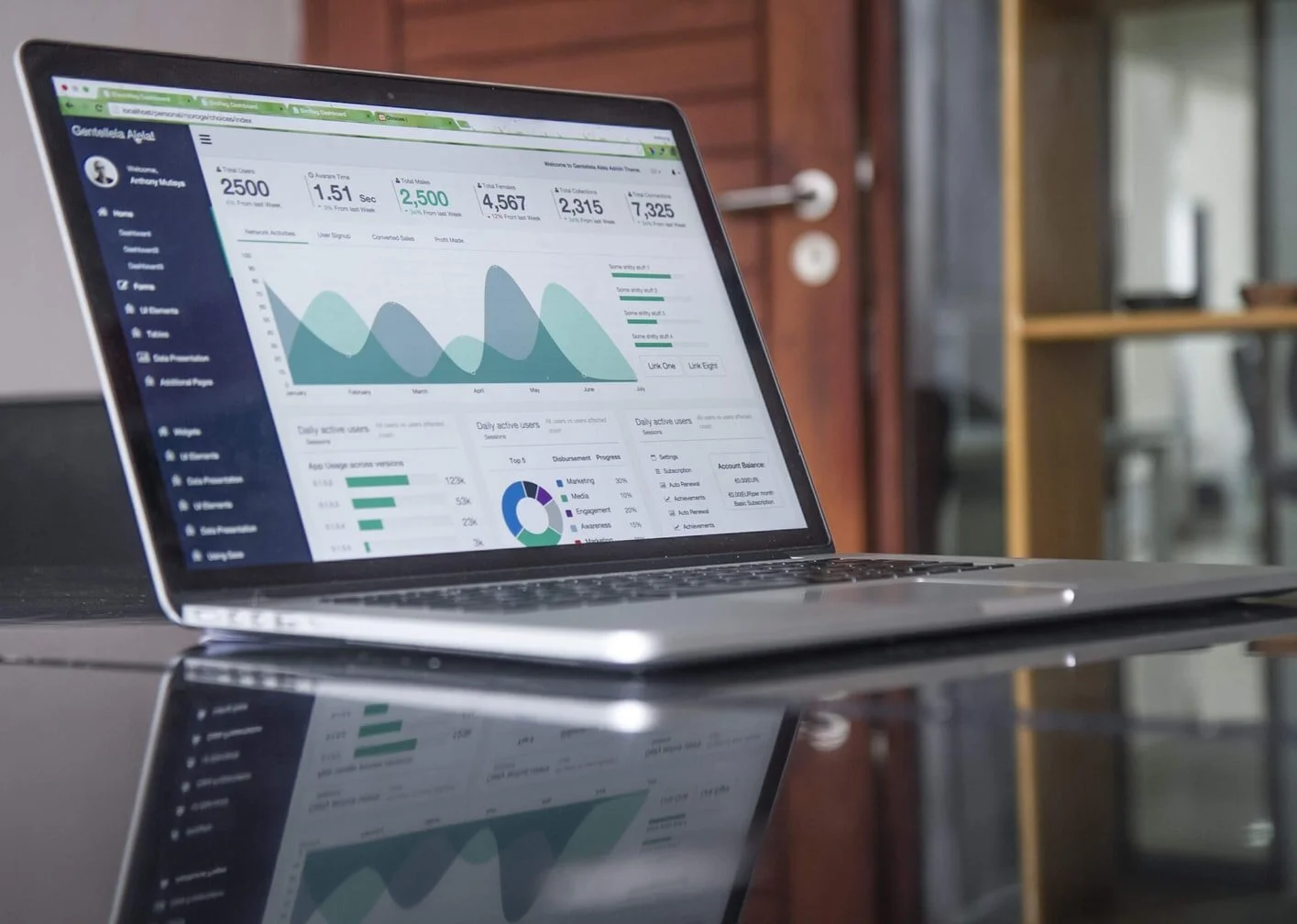The idea of collecting data is not new within the nonprofit world. Today, community-facing nonprofits are realizing how critical data collection is in achieving and reporting on their missions. According to the most recent edition of Salesforce’s Nonprofit Trends Report, organizations that ranked higher for digital maturity, or their ability to leverage data to inform decision-making, had a greater likelihood of exceeding goals during (and after) the COVID-19 pandemic. As more user-friendly technology are applied in CRM systems, the obstacles of domain knowledge are diminishing. This results in a positive implication of what these systems can do for nonprofits and how it can transform how these organizations are run. However, the lack of budget and training resources makes the obtention of these systems unlikely for many nonprofit organizations.
Google Suite’s Top Features for Maximizing Analytics
Google Analytics is an indispensable tool for any business to better serve its customers, achieve business goals, and build successful marketing campaigns. Used by itself, analytics is a powerful tool that can help an organization optimize its website and customer pathways. However, integrating additional tools within the Google Suite of tools offers more nuanced and informative means of maximizing data integration and your understanding of your institution’s website connections and conversion. This research report gives a how to for 7 critical Google Suite tools to maximize Google Analytics impact.
A Simple Guide to Data Analytics for Nonprofits
More than a trend or a buzzword, data analytics is here to stay. Newcomers to arts management may find themselves asking, what does data analytics mean for me, and how and why does my organization need to use it? If you are new to arts management, or the data world in general, this two part series is for you!
New White Paper: Open Data and Data Visualization in Arts Organizations
Data collection and communication is an essential tool for effectively managing arts organizations. Data visualization techniques can reveal organizational or industry insights in a manner which is easy for managers to understand and communicate to their stakeholders. Explore sources for open source data, and low cost, high impact data visualization tools in this new white paper.
Learning How To Visualize Data: Free & Low Cost Professional Development for Beginners
White Paper Wednesday: A Guide to Navigating Google Analytics
Going Beyond Google: Data Sources and Visualization
Three Unique Insights You Can Get from Social Listening
Utilizing Data Through Search Engine Optimization
Is your arts organization maximizing it’s potential for earned income? You may be missing out on a huge opportunity for revenue generated by your website and social media if you are not closely monitoring your position in online search results. For arts organizations in the 21st century, maximizing the return on investment of digital campaigns is not a matter of creating the best website, but in mastering the art of search engine optimization (SEO).
Hollywood Stock Exchange: A League of Its Own
First launched in 1996, HSX is a free web-based multiplayer gaming simulator of American film industry. The rules are simple: players use virtual currency to buy, sell, short and cover “shares” of films, directors, actors and other related virtual securities. Although the exchange is entirely fictional, it reacts to actual industry-related news, making itself a community and information hub for both professionals and enthusiasts in the film industry.
Research Update: Best Practices of Social Media
Social media use has become nearly universal among arts organizations. A 2012 social media study conducted by Pew Research Center demonstrated just how widespread social media usage was, with Facebook and Twitter as the most popular platforms by far. What best practices exist for social media use, and is managing more platforms necessarily better?
Growing Social: How to Make the Most of Your Organization's Social Media Efforts
As many arts marketers, social media gurus, and nonprofit professionals attest, the question for nonprofit arts organizations is no longer whether or not to use social media but rather how to use it most effectively. This shift is reflected by AMT Lab readers’ responses to our 2014 AMT Lab Reader Poll, where a whopping 76% of respondents indicated they would like to see additional research on social media analytics while only 31% indicated interest in research on social media platforms themselves.
Grants Management Systems: Primer for Best Practices, Part 2
As data becomes increasingly necessary for art agency reporting requirements, great pressure exists among staff members to collect as much as possible, and as soon as possible. But collecting data without a clear purpose places a burden on the applicants that have to gather it and grant managers who need to interpret it.
So You've Got Some Data...Now What?
We seem to hear it everywhere we go, at conferences, from consultants, and in myriad publications: to run arts organizations more effectively, arts managers need to adopt data-driven business models. An increasing number of data collection tools are emerging on the market with capabilities and price points that have the potential to meet the needs of arts nonprofits, from CRM systems like Artful.ly to social media management software like Buffer. But once you’ve collected some data, how do you use it? Be it information about your patrons, regional demographics, or marketing trends, how can arts organizations take advantage of incoming data?
Research Update: Effective Uses of Social Media Management Software
Harvard Business Review found that 43% of companies that use (or are planning to use) social media believe they are using it ineffectively. Do those companies think social media is a passing fad? Or, do they just not know what to do with it? When implementing a social media plan, several questions arise: Who will update it? When will they update it? How will we keep track of our company’s reputation on a medium that never sleeps?
When Arts Play with Data
As a new buzzword, “Big Data” is all over our daily lives. However, the tech industry specializing in data collection and analysis doesn’t mean that other industries haven’t found value in using data. For anyone who knows baseball (or has watched Moneyball), we know that data analysis has become part of the player selection process. From a business perspective, big data enables companies to mix their patron data into a broader pool of consumer data and extract correlations that help them know with unprecedented specificity who are most likely to respond to their appeals. The great thing about data is that it replaces guesswork with facts and gives these corporates reliable answers, clear directions and predictable results. The not-so-great thing is that it replaces personal expertise and human intuition with cold hard math, a process that arts administrators who’ve built their careers on creative management practices might have trouble getting used to.
Flipboard: A Design and Data-driven Future
The news-reading app Flipboard just rolled out a major update—allows users to create their own personalized “magazines” for public viewing. The feature allows users to pull articles from a variety of sources, including Facebook, Twitter, SoundCloud, LinkedIn, Instagram and Tumblr. Users can also pull articles from the Web browser by adding Flipboard’s new bookmark “Flip it.” In a video below, Flipboard founder Mike McCue picked up a magazine built by a fan of the Coachella Valley Music and Arts Festival. It looked pretty neat, full of news and stories about artists performing at the event, together with relevant videos and even music that you can tap on and have playing in the background. Everyone can comment on the magazines.
Database Decisions for the Nano-Nonprofit: Part 1
Arts organizations of all sizes grapple with the question of how best to house information on the array of individuals with whom they interact. From ticket buyers to donors, members to volunteers, every arts organization builds a variety of relationships with a variety of constituents. Complicating matters, of course, is that many times these groups overlap. For the organization that wants to understand all the dimensions of its patron relationships, obtaining complete and nuanced profiles is often a challenge, time-consuming at best and impossible at worst. Recent years have seen a burgeoning of Constituent Relationship Management systems (CRMs), about which a wealth of literature is available.
GPS Indoors: ByteLight's Indoor Positioning System at Boston's Museum of Science
Who: Dan Ryan and Aaron Ganick, the founders of ByteLight, a Cambridge, Massachusetts start-up. What: A positioning system using LED lights enabled with the capacity to broadcast location data in indoor spaces, in real time, and without WiFi or GPS. Little satellites, if you will.
Data vs. Message: Which wins arts patrons?
What’s more important, what you say or who you say it to? Some might argue that a precisely defined target market can trump the creative message or offer. Proponents of the “killer offer” believe the right compelling message will overcome an imperfect effort to define the “who” in the equation.
I’m convinced that data, not guesswork or intuition, must drive sales and contributed revenues. A perfectly crafted message sent to the wrong prospect or patron is not only a waste of money, but damaging to the relationship we are trying to foster with our patrons.
So, message doesn’t matter? Wrong.
Data is incredibly important –and has arrived as the Secret Sauce of winning supporters. But data alone cannot drive success.
In his brilliant book, The Power of Habit, New York Times staff reporter Charles Duhigg explores how habits guide our lives as citizens and consumers – especially consumers of brand name products. Brands become habits that are very hard to break. If you live in a Tide or Crest toothpaste household, it is almost impossible to change the habit of buying those specific products.
Enter retailing giant, Target.
Like major retailers everywhere, Target collects terabytes of information about consumers and their purchases. Their desire to exploit moments of potential brand fickleness prompted Target management to look at changing purchase patterns as a predictor of specific significant consumer readiness to buy.
“Pregnant women and new parents are the holy grail of retailing,” a Target analyst told Mr. Duhigg in an interview for his book, which was excerpted in New York Times Magazine. They have much to buy and are relatively price insensitive. And, new brand habits can last for decades. Predicting pregnancy could be worth millions from a small group of customers.
From data, Target learned that pregnant women buy more vitamins and specific minerals, unscented lotions and soaps, hand sanitizers and a few dozen other products. Their data analysts actually built a model to predict a due date for the baby.
Data wins, right? No. As Mr. Duhigg reports, it turns out that “hiding what you know is sometimes as important as knowing it.” Sending a likely pregnant mother coupon offers for diapers or discounts on maternity clothing may be good direct marketing but likely will be seen as a creepy intrusion into a customer’s private life.
For Target, the solution became one of messaging – meaning that they could successfully make expectant baby offers so long as the offer appeared to be random or non-specific to the pregnant woman. Diapers and lawn mowers. Vitamins and DVD players. If the offer appeared to be directed to everyone on the street, she would respond. Target sales to likely pregnant moms soared.
During the recent presidential campaign, Obama volunteers made millions of outbound telephone calls with scripts that included questions asking voters to visualize their behavior on Election Day. “What time of day will you vote?” “Will you drive or walk to your polling place?” “Which route will you take?” Such visualization techniques markedly improved the probability of the voter’s carrying through with the desired action – in this case, casting their ballot on Election Day.
Considerable research is emerging around the use of offers that rely on social or peer recommendation to encourage a positive action. The rise of Facebook, Twitter and other social media channels offers limitless opportunities to build virtual communities around any idea. When coupled with expansive data resources, the effectiveness of social media and other tools for creating new patrons and deepening existing relationship grows exponentially.
But data does not create relationships. Data is just an inert tool that allows conversation, cultivation and the building of relationship to occur in a much more efficient way. And ultimately, patron values only rise when a sense of relationship exists between people: patrons, artists and the art that is being created. Passion is an indispensable part of the equation. Obama campaign architect, David Plouffe offers,
If you want to "…build a grassroots campaign, ... it's not going to happen because there's a list or because you have the best technology. That's not how this works. They have to build up that kind of emotional appeal so that people are willing to go out there ... and spend the time and their resources and provide their talents ... But the reason those people got involved was because they believed in Barack Obama. It was a relationship between them and our candidate."
This concept has deep roots. Four decades ago, Danny Newman counseled arts organizations to host house parties that brought together friends from the country club, bridge club and PTA. His goal was to use peer community networks to get neighbors to encourage neighbors to “Subscribe Now” – to support the local ballet or symphony orchestra. And it worked.
As humans, we crave community and relationship. Tools like Facebook and predictive modeling allow arts organizations to tap into the DNA of our patrons and their communities – and do so in a very efficient way. Ultimately message trumps everything.
What have you learned from using data to craft your message?























